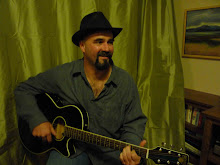
Recently I had the "pleasure" of going through the re-admittance process at UCD. Why "pleasure" with quotes? Because it was anything but a pleasure. In fact it was downright painfully and possibly treacherous to your health.
It all started when I realized Davis had opened up the Interior Architecture program through the Department of Design. I had just been getting ready to leave Davis for good when this new program caught my eye. After trying a couple of classes during summer I decided I might checking into how difficult it would be to re -enroll. After meeting with advisers it seemed like a possibility. So last June I filled out an application and mailed it to the registrar's office along with a check for $70.
Well, summer went by and Fall was beginning and I still hadn't heard anything. I had called the registrar's office early on and each time they said they would email me as soon as they processed my paperwork. With classes starting in a couple weeks I thought it might be convenient to know so that I could plan accordingly. This time I was forwarded to the person who was processing the applications for re-admittance students. She didn't answer and I got her voice mail so I left a message. Later I called and left two more. To these I also got no response. I thought they had either lost my application or decided to turn me down but I figured either way someone should talk to me because I had paid them $70 and they owed me that much.
So I went to the registrar's office and waited in line for a 45 minutes before finally reaching the front and telling them the story. This time I got results one of the desk attendants ran in back and a minute later came back out. She informed me that I had been approved but they were not processing any of the re-admittance students' paperwork until a few days later, nor were they letting any of them know whether they were accepted or not.
The Problem - classes had started a week before. The person at the desk advised me to keep going to classes that I wanted to get into and as soon as they processed me I could go online and enroll. That sounded good except that the classes were already full and had been for a long time as previously enrolled students had filed them up. I met two other people who had applied for re-admittence and they, like myself had been attending classes not knowing whether they were wasting their time or not. I wished them luck.
Eventually, after calling a few more times I found out I had been processed and was in the system. No letters or emails ever came. To this day I have received nothing "official". No "Welcome back Dave" no congratulations, nothing. Just a bill for $3500 on my campus accounting page with lots of descriptions of the horrors that await me should I not pay in time(that path I am well aware of)
I fought for awhile and go tint the two classes I needed. Because I work 30 - 40 hours a week I can only go part time so two classes was enough.
As a system the design of UCD re-admittance program is a failing. But it's just one small part of a larger design that also seems to be rusty and falling apart. After getting in I encountered difficulties and friction with all the other step - financial aid, application for part time status, declaration of California residency, etc.. The people working in these areas all seemed to be tired, disgruntled and generally unsympathetic to any complaints I had. If I mentioned that fact that I paid a lot of money and was it too much to ask for a little assistance the answer usually was something like - "That's just the way it is" or "budget cuts" followed by a grown or "we do that to everyone". One woman in the Student accounting department boldly told me that they figured if I wanted to get back in bad enough I would do what they asked.
I have to say it was a rough an depressing re entry into school. I spent hours over the first two weeks standing in line, arguing and writing on hold. Meanwhile I had to work and homework was already piling up.
Solutions? Well, the most common problem I kept hearing was "budget cuts" so I guess more money would be a solution if they could find some. But wait, don't they raise registration fees and charge us a lot of money? So maybe they problem lies in how they are spending it. I see a lot of remodeling of buildings going on that wasn't happening the first time I was a student.
I'm sure it's more complicated then that but what I fear is that behind the scenes they are arguing much like they way our government is arguing over health care.
The effect of all this- I know I almost gave up but somehow I am still here. I wonder what happened to the other re-admit students I met. Why did I keep going?
The Answer - there has however been a ray of light. After all these the educators are still the same, not the same people, necessarily but they same great attitude. Their classes are overbooked, and people are sitting in the aisles. Many of them could be making more money in out in their fields but they are still here. They are still kind and they still care and they made me feel like it was somehow a good idea to keep fighting my way back in.
*Photo- "Bureaucracy" courtesy of Mommylife.net

























